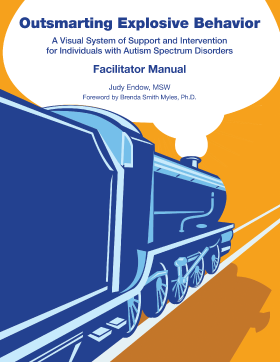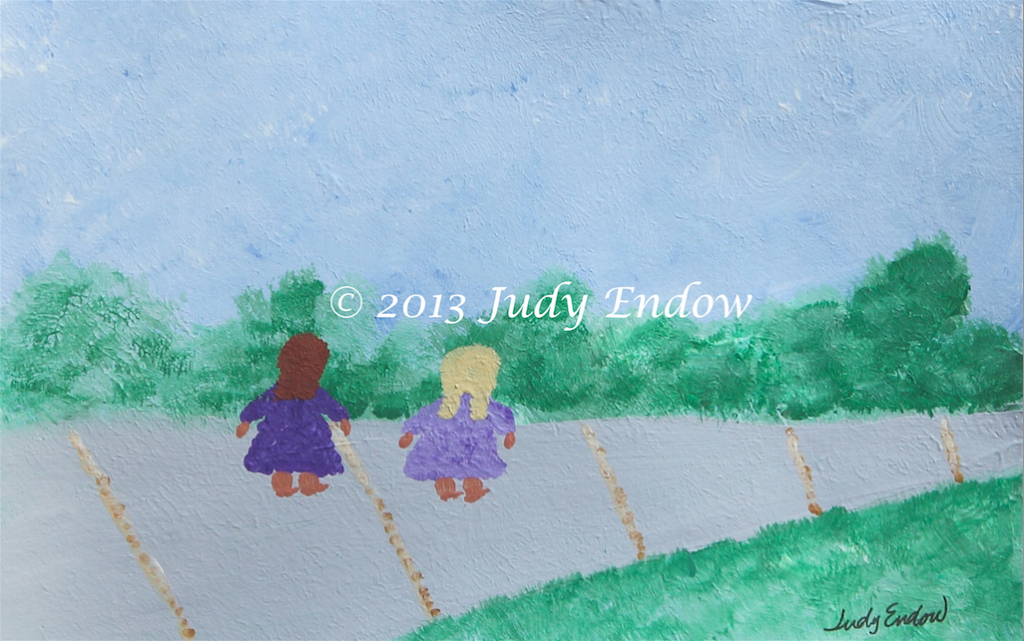Originally written in English: Losing an Autism Diagnosis
Je suis une femme autiste de presque 60 ans et je suis relativement à l’aise en société, à un tel point que certaines personnes sont étonnées quand elles apprennent que je suis autiste. J’ai passé mon adolescence en institution, parce que personne ne savait quoi faire avec mes « comportements », ni avec moi. Aujourd’hui, je travaille à mon compte : je suis auteure, conférencière, consultante et artiste et je détiens une maîtrise en travail social.
Question : Est-ce que j’ai perdu mon diagnostic d’autisme?
Réponse pragmatique : Oui et non.
Non, il n’est pas possible de « perdre » un diagnostic d’autisme
Officiellement, une fois qu’une personne reçoit un diagnostic, peu importe lequel, ce diagnostic est ajouté à son dossier médical. Les médecins ne peuvent pas reculer pour effacer un diagnostic, ni changer quoi que ce soit à ce qui est déjà inscrit au dossier. En fait, c’est interdit! On ne peut qu’ajouter des renseignements.
Oui, on peut « perdre » un diagnostic d’autisme
Dans la pratique, un diagnostic est établi en faisant correspondre des symptômes observés à une liste de critères diagnostiques particuliers et bien définis. Avec le temps, si les symptômes s’atténuent, les critères utiles au diagnostic peuvent devenir imperceptibles. Pour certains, cette réduction des symptômes observables équivaut à une perte du diagnostic.
Le cerveau autiste
Il est généralement reconnu que le cerveau humain est « malléable » au cours de l’enfance. On sait aussi qu’un diagnostic précoce permet une intervention en bas âge et que les résultats d’une telle intervention précoce peuvent être très positifs pour certains enfants autistes, c’est-à-dire si l’on considère comme positif qu’on obtient de ces enfants autistes qu’ils peuvent se comporter comme des enfants non-autistes. Ce qu’on ignore encore, c’est l’effet de ces changements comportementaux sur le cerveau – le cerveau autiste de l’enfant a-t-il réellement été modifié, est-il devenu un cerveau non-autiste? Selon mes recherches, il n’existe aucune documentation qui en atteste.
Mon vécu
Chaque jour où je dois sortir pour aller dans le monde, des difficultés m’attendent. En fait, la plus grande part de ma vie à ce jour a été employée à résoudre ces difficultés. Mon système sensoriel ne fonctionne pas comme celui d’une personne non-autiste dans sa façon de recevoir, de traiter et d’extraire l’information du monde qui m’entoure. La lumière est aveuglante, les sons sont amplifiés et ma perception du mouvement est souvent accompagnée d’une distorsion. Je suis souvent distraite ou heurtée par une multitude de détails sensoriels que personne d’autre ne remarque, parce que leurs sens ne les captent pas; souvent ils me causent aussi de la douleur.
À l’occasion, je porte des bouchons pour les oreilles ou des lunettes de soleil. La plupart du temps, certaines méthodes d’intégration sensorielle sont également utiles, comme l’utilisation d’une couverture lourde, la massothérapie ou la thérapie de pression intense. Mais la meilleure solution que j’ai trouvée consiste à planifier de fréquentes périodes de repos, c’est-à-dire sans bruit et sans interactions, pour que mon système puisse intégrer le surplus déstabilisant d’expériences sensorielles qui composent mon quotidien. En termes pratiques, quand je passe la soirée à la maison, il est très rare que je regarde la télévision, que j’écoute de la musique ou que je parle au téléphone. Parfois, je prends un médicament qui sert à soulager le mal des transports.
Je suis épuisée à la fin de chaque journée de travail, parce que je dois continuellement faire de grands efforts pour calmer mes réactions aux stimuli sonores, visuels, olfactifs et cinétiques que la plupart des autres personnes ne remarquent pas. Je dois porter une attention particulière aux mimiques sociales conventionnelles, par exemple ne pas oublier de regarder la personne avec qui je converse, surveiller le sens des mots pour savoir lesquels ressortent du « langage professionnel » et quels autres forment du « remplissage social », puis répondre de la façon correspondante. Je fais des efforts en ce sens parce que j’aime pouvoir m’intégrer et parce que, sous de nombreux aspects, ils sont essentiels pour le maintien de mon emploi.
J’ai développé une vraie compétence pour bien doser les périodes de repos, les moyens de protection sensorielle utiles en fonction de l’environnement et les méthodes d’intégration sensorielle nécessaires pour bien gérer mes différentes journées. Avec l’âge, j’arrive à me deviner de mieux en mieux, mais encore maintenant, il m’arrive d’être épuisée à la fin de la journée parce que j’ai tenté de « suivre la parade » (dans ce cas-ci, la parade des non-autistes!)
En m’observant, certains diraient que j’ai perdu mon diagnostic d’autisme, mais c’est simplement parce que j’ai appris à inhiber, quand je suis en public, la plupart des réactions qui me viennent naturellement. Il est rare que j’agite les mains, que je couine, que je gémisse ou que j’émette d’autres « bruits parasites ». Parce que je veux avoir l’occasion de participer à la société, j’ai appris, au fil des ans, à me comporter comme une personne de la majorité neurotypique. C’est un privilège dont je suis bien consciente – en effet, ce ne sont pas tous les autistes qui sont capables d’inhiber leur comportement suffisamment pour être acceptés en société. Cela dit, si je suis capable de m’intégrer, j’en paie le prix chaque jour : après des dizaines d’années de pratique, il m’est aujourd’hui plus facile de maintenir un comportement « acceptable », mais c’est une faculté qui ne me vient toujours pas sans effort.
Considérations futures
Sur le long terme, je crois qu’il est essentiel de revoir et de repenser la façon dont nous mesurons la réussite pour les personnes autistes. Ce débat évoluera sans doute si la science arrive un jour à prouver que le cerveau des enfants autistes, si malléable, peut réellement se transformer en un cerveau non-autiste à l’âge adulte. Mais en attendant, nous devons nous interroger : l’objectif, pour l’autiste, de se fondre à son entourage au point qu’il soit impossible de le différencier de ses pairs est-il vraiment souhaitable, valable ou de quelque façon une mesure de réussite? Et si c’est le cas, pour qui cette mesure de réussite compte-t-elle, au juste?
RÉFÉRENCES
Endow, J. (2019). Autistically Thriving: Reading Comprehension, Conversational Engagement, and Living a Self-Determined Life Based on Autistic Neurology. Lancaster, PA: Judy Endow.
Endow, J. (2012). Learning the Hidden Curriculum: The Odyssey of One Autistic Adult. Shawnee Mission, KS: AAPC Publishing.
Endow, J. (2006). Making Lemonade: Hints for Autism’s Helpers. Cambridge, WI: CBR Press.
Endow, J. (2013). Painted Words: Aspects of Autism Translated. Cambridge, WI: CBR Press.
Endow, J. (2009). Paper Words: Discovering and Living With My Autism. Shawnee Mission, KS: AAPC Publishing.
Endow, J. (2009). Outsmarting Explosive Behavior: A Visual System of Support and Intervention for Individuals With Autism Spectrum Disorders. Shawnee Mission, KS: AAPC Publishing.
Endow, J. (2010). Practical Solutions for Stabilizing Students With Classic Autism to Be Ready to Learn: Getting to Go. Shawnee Mission, KS: AAPC Publishing.
Myles, B. S., Endow, J., & Mayfield, M. (2013). The Hidden Curriculum of Getting and Keeping a Job: Navigating the Social Landscape of Employment. Shawnee Mission, KS: AAPC Publishing.
Translation/traduction: Marie Lauzon, C. Tran./trad. a. (Canada) marielauzon.com
Losing An Autism Diagnosis
Originally written in English
Judy Endow, MSW




